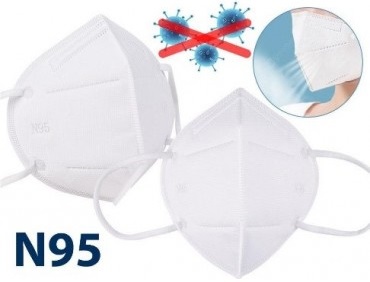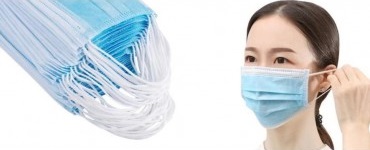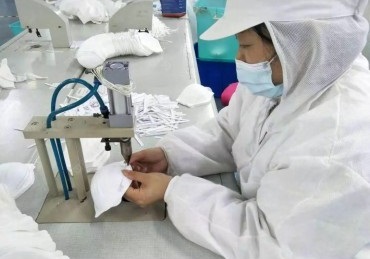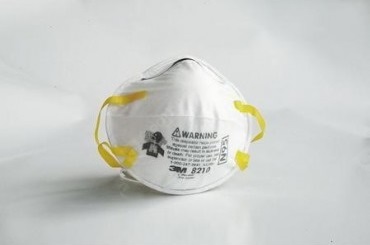1. What’s an N95 mask?
An N95 respirator is a respiratory protective face mask, designed to help reduce the user’s exposure to airborne particles including very small particles (0.3 microns) and large droplets. N95 respirator face mask literally has a filtration efficiency of at least 95% against non-oily particles.

2. Differences between N95 mask and surgical mask?
Generally, the N95mask also includes an N95 surgical mask. So, here we will just compare a standard N95 particulate mask with a disposable surgical mask. Surgical masks are designed to be worn by healthcare professionals during surgery and nursing, to help prevent contamination of the surgical field or the patient by capturing liquid droplets that are expelled by the user.
An N95 particulate mask blocks at least 95 percent of very small (0.3 microns) test particles, and while a disposable surgical mask is fluid-resistant and protects the user against large particles (5 microns), droplets, sprays or splatter.
Different from a loose-fitting, disposable surgical mask, an N5 mask is tight-fitting to achieve a very close facial fit, which guarantees a minimal leakage around the edges of the mask when the user inhales. If properly fitted, the filtration capabilities of N95 respirators exceed those of disposable surgical face masks.
Speaking of the N95 mask price and disposable surgical mask price, the N95 respirator mask is pricier than a surgical mask. In contrast, the N95 mask is reusable but the common surgical mask is disposable. Strictly speaking, N95 respirator masks should be worn for a maximum of eight hours while the disposable surgical mask is recommended to be replaced every four hours.
However, during the novel coronavirus outbreak, face masks are in short supply and everyone discards one or two face masks every day. A surgical mask could be used for a whole day in a good condition of no damage, no moisture, and no deformation. According to some researches, the N95 respirator mask used for two days still maintains a filtration efficiency of at least 95%, while the filtration efficiency of an N95 respirator used for three days reduced to 94.7%. So, if an N95 respirator is in good maintenance, you can wear it for at least 2 days, a week, maybe even a month.

3. Types of N95 mask
Generally, according to their intended use, the types of N95 masks include the standard N95 particulate respirators and N95 surgical respirator masks. Additionally, there are N95 masks with a breathing valve or not.
A.) Differences between standard N95 particulate respirator and N95 surgical mask:
How to differentiate standard N95 particulate-filtering respirators and N95 surgical masks? The N95 surgical mask is literally a combination of N95 respirator and surgical mask, it is both certificated by NIOSH as an N95 respirator and also cleared by the FDA as a surgical mask. N95 surgical respirator masks are also referred to as medical respirators, healthcare respirators, or surgical N95s.
The significant difference between a standard N95 particulate respirator and an N95 surgical mask is that the N95 surgical mask is fluid-resistant while the standard N95 particulate respirator is not.
An N95 particulate respirator, also called N95 dust mask or N95 pollution mask, helps reduce very small particles inhaled by the user, and it is used for respiratory protection when the user might be exposed to particulate hazards. With a fluid resistance plus, an N95 surgical mask help reduce particles both inhaled and exhaled by the user, it is designed to be used during surgery and nursing tasks, whatever the user requires respiratory protection, expelled particulates or requires fluid resistance.

B.) Differences between N95 masks with a breathing valve or not:
Many people question: Is an N95 mask with an exhalation valve better than the one without a valve?
In fact, the N95 respirators with an exhalation valve are not recommended to be used for coronavirus prevention, because the valve is a one-way vent that couldn’t keep your exhalation to yourself. It means that this valved N95 mask makes your breathing out easier and helps reduce heat build-up to avoid fogging up your glasses, however, it’s not that friendly to others.
Besides, the N95 mask with the valve is pricier than the one without a valve.

4. What are the differences between N95, KN95, FFP2, and KF94?
When you search for the N95 respirators, there are many respirators such as KN95, FFP2, and KF94 that appeared in the same breath. What’s different between these respirators of different letters?
Actually, both the N95, KN95, FFP2 and KF94 respirators have almost the same filtration efficiency, it means that KN95, FFP2, and KF94 are as effective as the N95 respirator mask. The main difference between these respirators is that they are tested by different nations.
The N95 mask has a full name of NIOSH-certified N95 respirator, which means these respirators are tested of 95% filtration and certified by the U.S. National Institute of Occupational Safety and Health (NIOSH). The KN95 respirator is a particulate-filtering mask tested using the China criteria. The FFP2 is a filtering facepiece score of 94% filter capacity approved by Europe, and the KF94 is tested by Korea criteria.
To simply put, we could put these respirators into an equation as below:
N100 (99.97%) = FFP3 (99.95%) > N95 (95%) = KN95 (95%) = FFP2 (94%) = KF94 (94%) > KN90 (90%).

